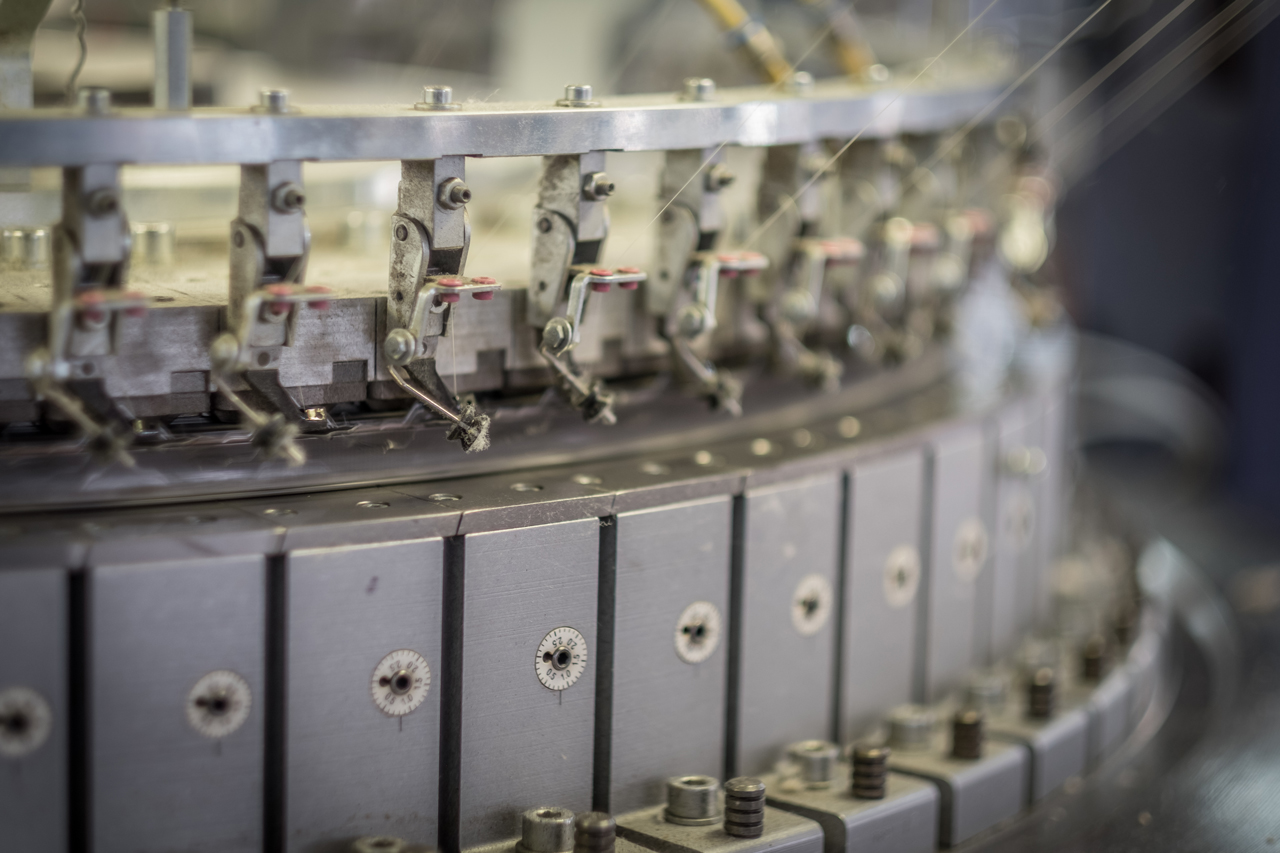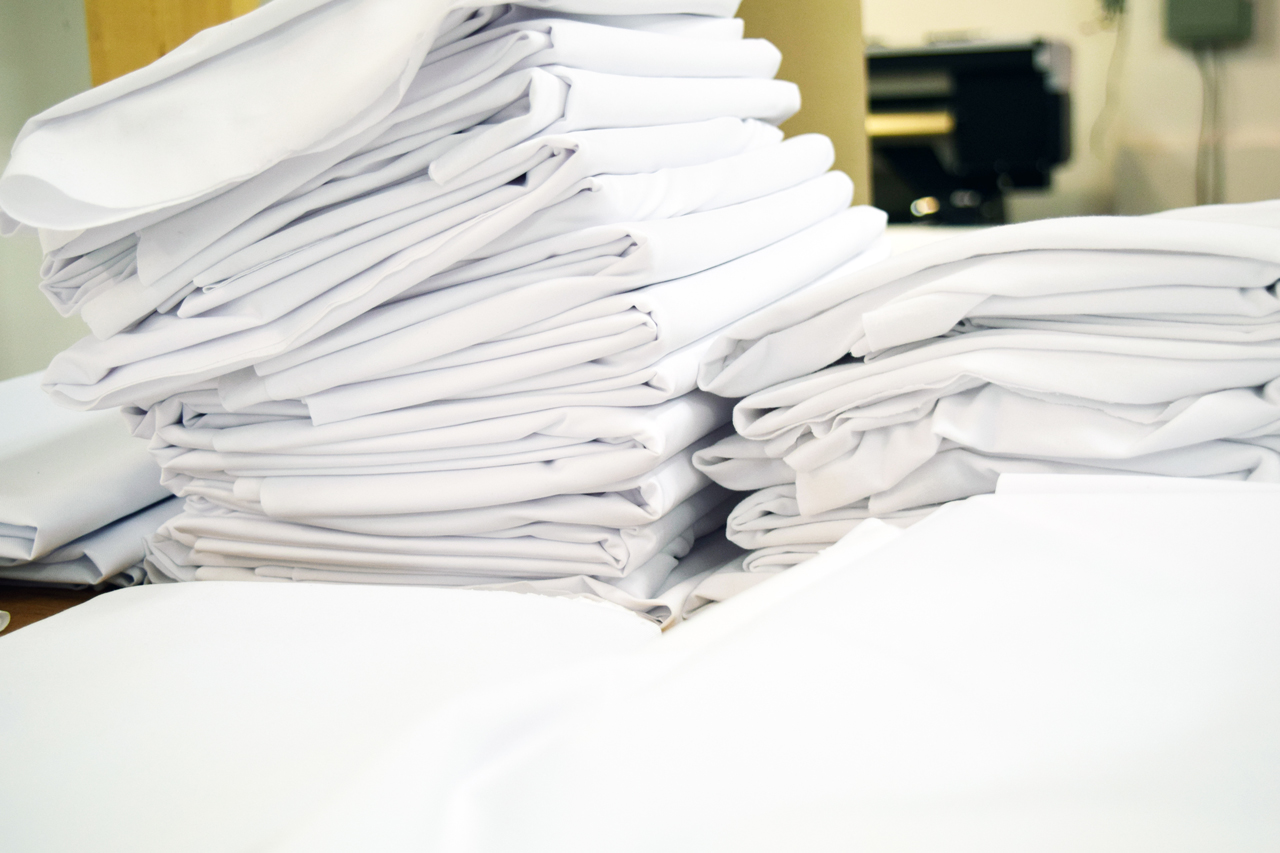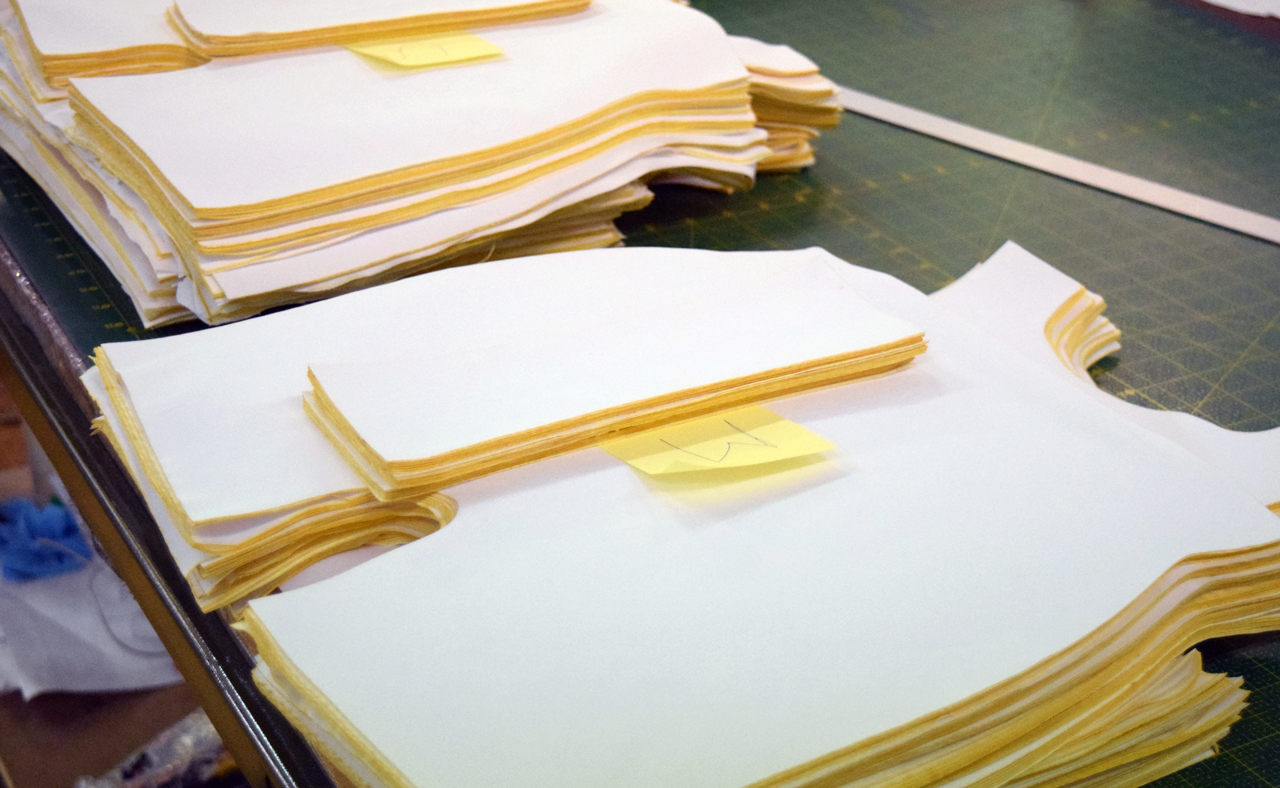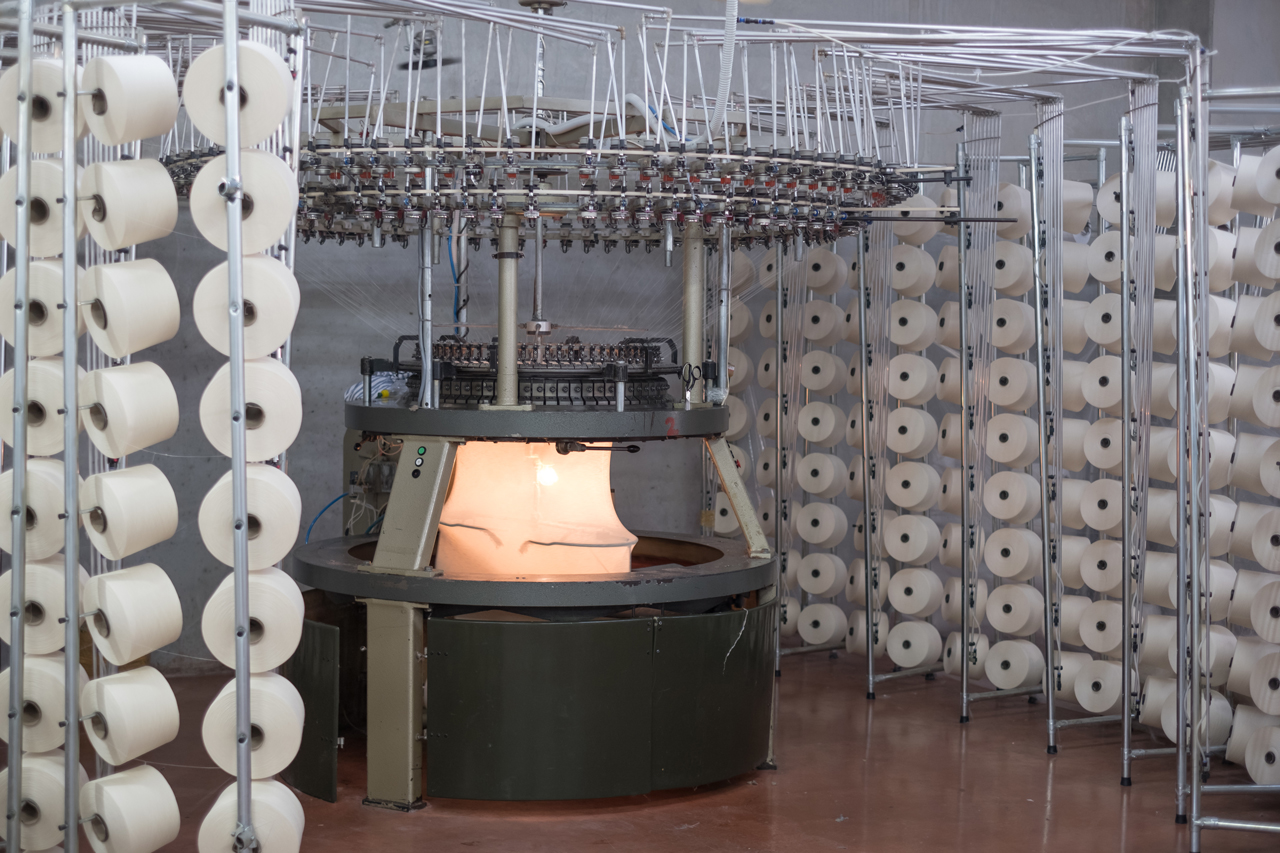How our legging fabric is made in Montreal

We get a lot of questions about the fabric we use for our leggings! Where is it made? How is it made? How is it more eco-friendly? What about the other fabrics? We’ll address these questions and more below!
Local manufacturing
Leggings are such a versatile piece of clothing, and with custom printing they can be made to suit anyone’s taste. This is one of the many reasons they’re our best selling product! Another reason is that we have some of the best fabric around. When sourcing fabric for the leggings, we ordered samples from many, many manufacturers. One of the most outstanding samples was, to our delight, produced right here in Montreal. While it was normally used for outdoor rowing team uniforms, we knew we could tweak the fabric content to work for our leggings. After experimenting with the formula and weight, we settled on a 88% polyester and 12% spandex, a combination that provides a balance of everything important in performance fabric: power, recovery, durability and comfort.
The final result is what we call our performance knit and is used in our leggings, shorts, capris, yoga leggings and skirts.


The advantages of having a local manufacturer are the ability to communicate our needs and concerns immediately, and not having to wait for a shipment that may or may not be up to par to travel the ocean. We receive specs on every lot of fabric made so we can check for consistency. While our manufacturer does their own quality control, our staff also double check rolls before they start production. We limit the carbon footprint of this fabric by shipping it directly from the factory to our studio, both located on the island of Montreal. We have never experienced a shortage of stock of our performance knit and we don't have to contend with pricing fluctuations due to changes in raw material costs. Having a local manufacturer is the best way for us to ensure quality raw ingredients are used to make quality products and all at a reasonable price for our customers.
How is our performance knit fabric made?
Stretch knit fabrics can be made in different ways. Our manufacturer uses a circular knitting loom to create weft-knit fabric.

To see the machines used for manufacturing knits in action, check out the video below from Textile School which describes the process:
For even more information about how knits are made, what the stitches look like and sewing tips, check out this amazing article from Threads Magazine by Sarah Veblen.
How is your performance knit fabric eco-friendly?
The raw fabric is knitted from polyester fiber. This raw fabric is called the greige. The greige is sent out for processing, and this is where huge strides have been made in eco-friendliness. The process developed by our manufacturer uses 70% less water, 70% less energy and 70% less heat than traditional polyester manufacturing. Producing one meter of regular polyester fabric by the traditional method uses 13 liters of water and 29000 kilojoules of energy. Eco-poly uses only 3.9 litres of water and 8700 kilojoules of energy. While this might not seem like much to brag about, consider a situation where you use 10 000m of fabric per month. A savings of 70% water and energy has an enormous impact.
It gets even better! The same local manufacturer makes our swimsuit knit, spun polyester and silky knit. The polyester used in all these fabrics is the same eco-poly used for our performance knit.
What about the other fabrics?
If we could, we would source all of our fabrics within Canada, but this isn’t possible as woven fabrics aren’t manufactured in Canada anymore, and when it comes to knit fabrics, we don’t always find the perfect fabric here. Woven fabrics such as our velveteen and poly-canvas are imported for us by local companies. We work with them to ensure product quality and supply is maintained as we know both are important to our customers.
How is woven fabric made?
To learn about woven fabric, check out this super comprehensive video by TexTalks:
To see a comparison of knit and woven fabric, check out this great video by SampleHaus:
For more information about our fabrics and processes that we haven’t mentioned, get in touch with our customer service or post in the comments and we’ll help you find the answers.
